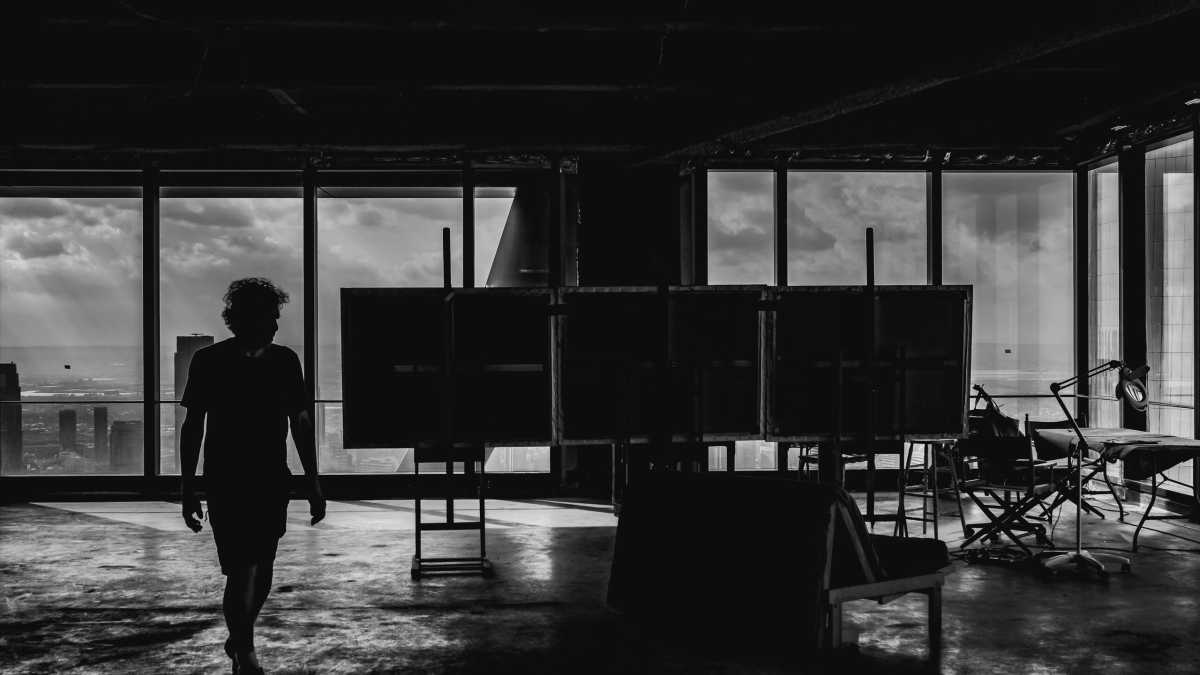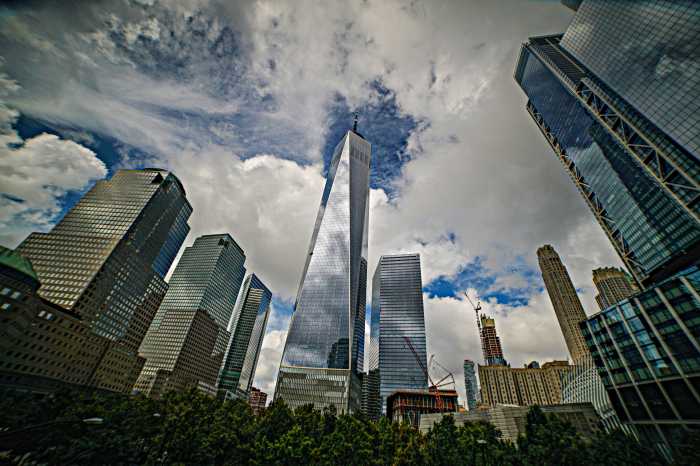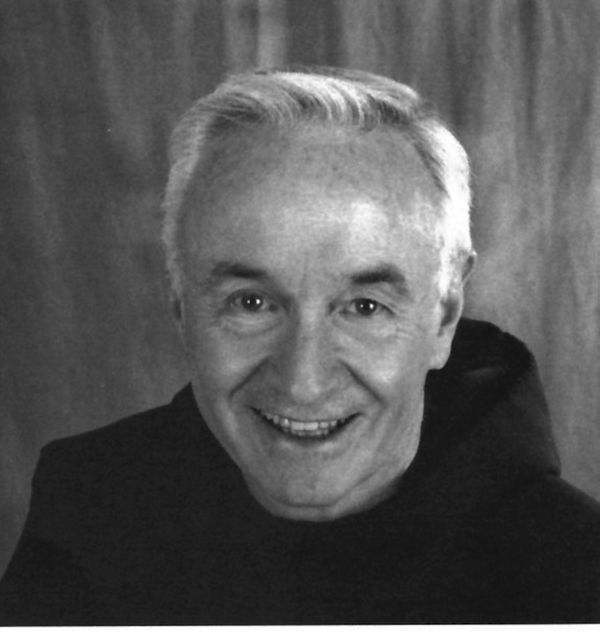
The destruction – and ultimate rebuilding – of Lower Manhattan has been on the mind of painter Todd Stone for more than two decades.
He witnessed the jetliners soaring over his lived studio space in Tribeca on Sept. 11, 2001 himself, and watched as two of the most iconic buildings in the Manhattan skyline were destroyed in an act of terror that killed around 3,000 Americans.
Now, over 40 paintings later, Stone is showcasing this body of work in partnership with NYC Culture Club which is displaying images that document the terrorist attacks as well as the rebuilding of the World Trade Center.
Together, NYC Culture Club’s Parker Calvert and Stone believes that now is the time to tell this story no matter what possible critics may have to say for the catharsis the works could do for both men and the larger community still suffering in the aftermath of 9/11.
“I was called to history, history came knocking at my door. And this wasn’t something I asked for, but I was uniquely positioned to do this and you know, post nine on and I and I practice my art. I did my work. Just like the cops, just like the firemen, and with consequences. Not the consequence they paid, but with tremendous emotional trauma that I was working through in my pictures. So, the witness work was done as the fires were burning down here,” Stone said.
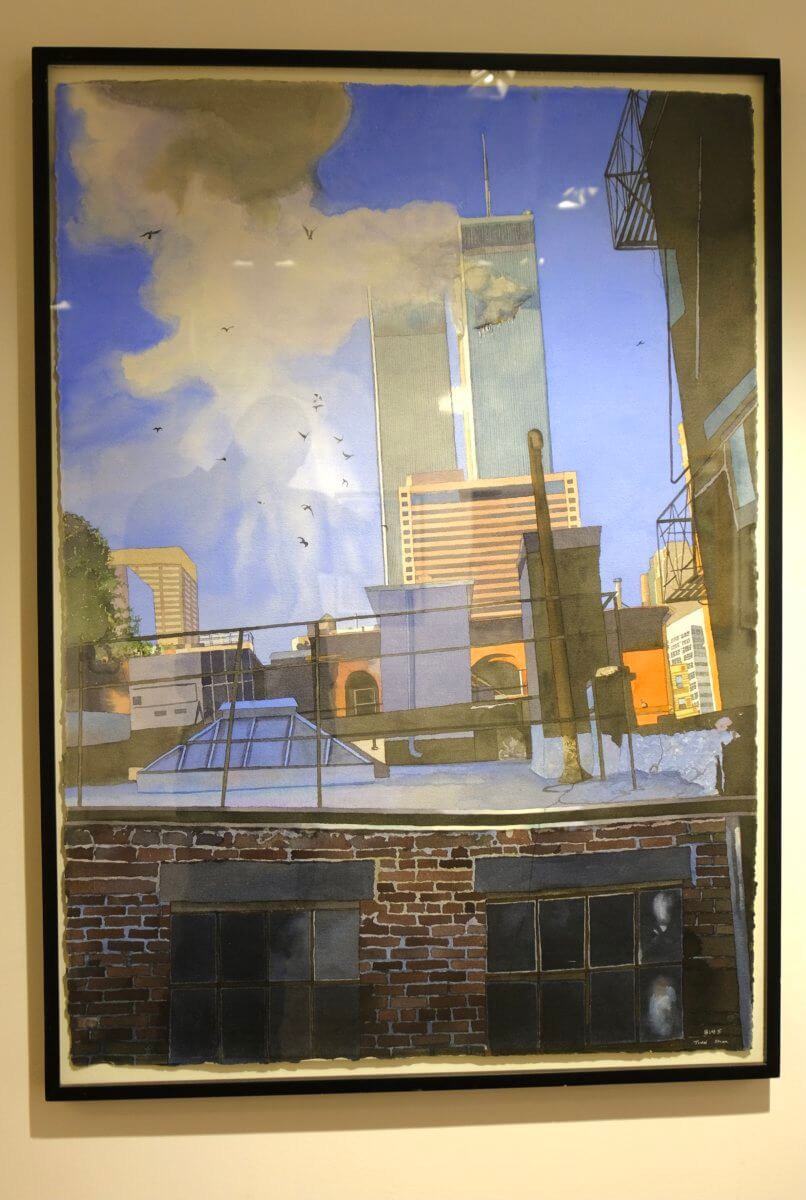
On that sunny day, when the planes crashed into the Twin Towers, Stone was already in the habit of sketching, painting and photographing the skyline during the morning hours.
At first, believing that the plane was a missile, Stone says he dove for cover. But upon surveying the view from his loft, he snapped a photo of pigeons rising from the din of the impact.
“We were living with the burning at the World Trade Center and at that time we chose to stay because it seemed like the patriotic thing to do,” Stone said.
This would transform into a painting now displayed, along with many others, in the NYC Culture Club’s space beneath 3 World Trade Center. In fact, 3 WTC has become the center for much of Stone’s work over the years being the artist in residence for Silverstein Properties, having the whole 71st floor to himself.
One motif that has stuck with Stone through many of his pieces is the symbol of the crane. In Japanese culture, the sight of this bird is a good omen. A different kind of crane became commonplace in the New York City skyline as contractors worked to rebuild downtown, and Stone says he gave himself permission to make the tools of high-rise construction beautiful.
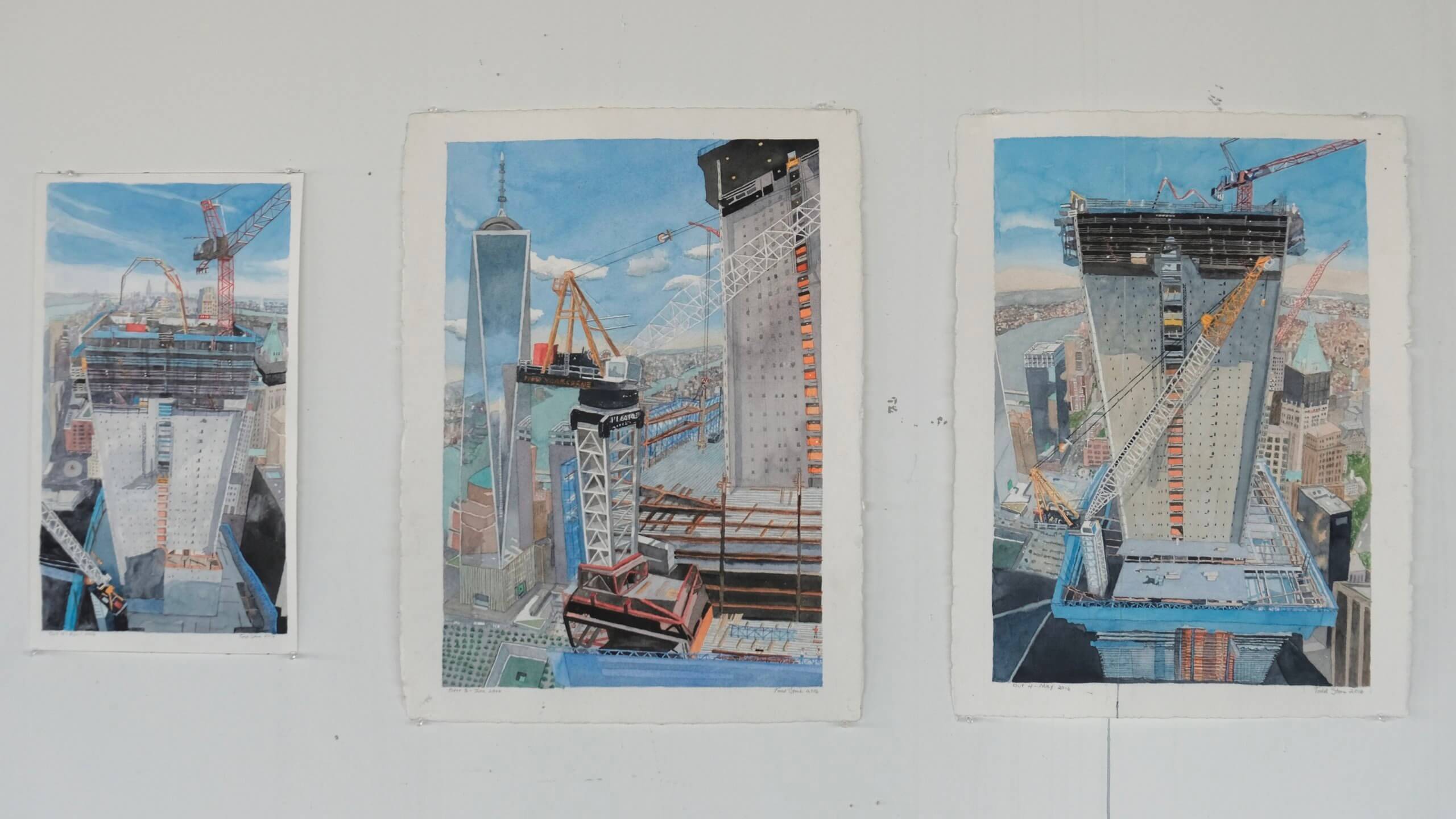
Standing-in symbolically for human likeness in much of Stone’s art concerning 9/11, he says, are the many windows on buildings. He goes through the effort of putting a window in each painting to represent a victim from that day.
The sense of loss comes through in another of Stone’s works based on a scene at Ground Zero on Sept. 11 2002.
“This was the first time the site had been emptied [of debris] and families were invited back. This wind came up, and all of this dust was unsettled from the floor of the World Trade Center, and came up. All of these unsettled spirits seemed to rise,” Stone said, “I feel those unsettled spirits now.”
According to Stone, the reflecting pools that stand at the site of the Twin Towers still create a feeling reminiscent of that upward draft.
Stone was also an early critic of the rebuilding of downtown after 9/11, believing Ground Zero should be memorialized in similar fashion to the Battle of Gettysburg site. But the years, as well as his personal sense of powerlessness, have worn at his resistance. Now, he appreciates the rebuilt downtown and the site that commemorates the immense loss of life that day.
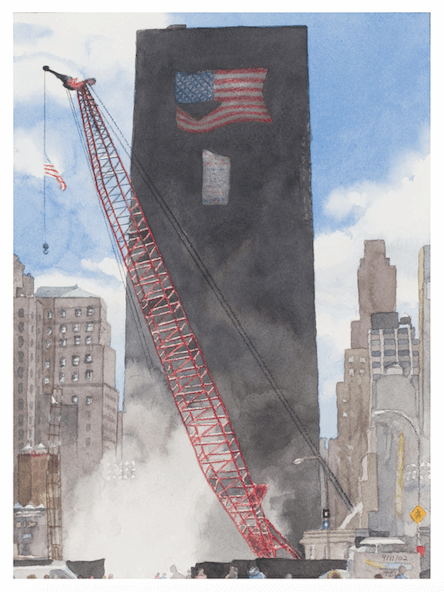
“I’m very aware of this, as an ongoing catastrophe as people continue to get sick and die,” he said. “But my message is one of renewal.”
Renewal, in fact, is the name of the display.
NYC Culture Club’s spot in the Westfield Mall in World Trade Center will be hosting Stone’s work from Sept. 1 through the end of the month in recognition of the 20th anniversary of the national tragedy.
Calvert is co-founder of the art space with his brother Clayton Calvert, both of whom were witness to the attacks from different parts of Manhattan.
“The show speaks to hope, to courage, and to a communal resurgence after immense tragedy,” Parker Calvert said.
While many of Stone’s works are already hanging in the gallery, a number of them are still gracing the walls of his workspace in 3WTC.



